Menaces of the Mind: The mysterious meaning of monsters
This is how the most terrifying creatures from myth and folklore can transform your mental health
You can watch / listen to this article on YouTube.
***
With a mocking smile, he placed one hand upon my shoulder and, holding me tight, bared my throat with the other, saying as he did so: “First, a little refreshment to reward my exertions". (...) I was bewildered, and, strangely enough, I did not want to hinder him. I suppose it is a part of the horrible curse that such is, when his touch is on his victim.
– Bram Stoker's Dracula (1931)
Has there ever been a time when we humans were not fascinated by monsters? Every culture's stories are saturated with darkness and menace: vampires, werewolves, changelings, ghosts, incubi, succubi… So, what if our obsession with the monstrous were about more than just the drama of the macabre? What if the creatures we most fear are not enemies at all, or even threats, but heralds or helpers? And, if so, how can we use their messages to better our lives?
Today, I’d like to explore the strange, beautiful, and terrifying world of monsters — not just as characters in stories, but as archetypal symbols of our inner worlds, and the shadow self. Why? Because what these eerie messengers have to say can empower us more than you might ever have imagined.
Humans need monsters
We humans, it seems, have a fundamental need for monsters. We are drawn to them, and fascinated by them, and if you take them away from us, we'll find a way to create them back into our worlds.
During the West’s Age of Enlightenment — that is, the 17th and 18th centuries – the church took a stand against what it saw as an unsavoury fixation on the grotesque, and all but erased the monsters that had up until this point saturated literature and storytelling. But the people of the time didn't abandon their fascination with monsters as the church had intended. Instead, they projected their need onto unsuspecting human targets – labeling people as witches, vampires or werewolves. This led, of course, to the witch trials and the death of between thirty and sixty thousand people – mainly women – in Europe and America.
Thankfully, the literary monster made a comeback in the late 18th century with the infamous gothic beasts of Mary Shelley's Frankenstein and Bram Stoker's Dracula.
The birth of the monster
Our monster lust has an interesting genesis.
In his book, Monsters, David D. Gilmore traces the first appearance of monsters back to the dawn of human civilization. Though there are records of monster-like cave paintings that predate this point in our history, by and large, monsters came onto the scene at the same time as social order. As Gilmore explains, art historian Heinz Mode "argues that visual portraits of menacing creatures occur precisely at the same time as does literacy" and that "consciousness of such ideas, as far as archeology can tell, occurs as a product of the earliest known civilisations, in the period of around 3000 BC".
So, it seems almost as if monsters serve as some kind of cosmic balancing device or, perhaps, as idealised society's evil twin or shadow self. Monsters function as a reminder of what we should fear and avoid; a metaphorical means of teaching us about evil and sin.
Compounding this idea, the words "monster" and "demonstrate" (or demon-strate) have the same etymological root in the Latin word "monstrum", which means "divine omen" or "portent". The word "monstrum", in turn, is derived from the verb "monere", meaning "to warn" or "to advise".
So, the idea of learning from monsters about what it means to be human is no modern flight of fancy or indulgent act of over-intellectualisation. It is, perhaps, what monsters were always meant for.
Monsters as archetypes
“Archetypes are the living systems of reactions and aptitudes that determine the individual’s life in invisible ways.”
- Carl Jung, The Archetypes and the Collective Unconscious, 1959
To view this idea through a psychological lens, we can see that monsters are archetypal and, as such, they speak to us on a deep, instinctual level about both the inner and outer world.
Those who aren’t that familiar with the term archetype may think of human characters when they first hear the word – the magician, the mother, the artist, the child… But archetypes aren't limited to the humanoid or even the animate.
In fact, some of the most pervasive and evocative archetypal motifs that show up in our dreams, myths, stories, etc. are non-human: the ocean, the mirror, the forest. Storms, fire, light, darkness… These universal symbols speak to us and through us on a primal level – we relate to them as more than their literal meaning, and we automatically understand them as both external and internal things. Fire is not just a flickering flame; it's passion, love, drive. Darkness is not just the absence of light; it's fear, threat, uncertainty. The unknown.
If you’re interested in the meanings of different archetypes, here’s a glimpse:
The House
Shelter, memory, self. But also: containment, repression, ghost.
The house holds our inner architecture. Attics brim with what we’ve forgotten; basements, what we fear to confront.
It is the psyche’s blueprint — and the monsters inside are often parts of us.
The Ocean
Endless, ancient, unknowable. It represents the unconscious mind, the maternal abyss, the place we emerged from and fear returning to. To face the ocean is to face what we cannot control — feelings too big to name, truths too vast to hold.
The Mirror
Reflection, distortion, doubling.
What does it show when no one’s looking? What does it reveal when you stare too long?
The mirror is the archetype of self-awareness — and its shadow: self-loathing, illusion, ego collapse.
The Void / Darkness
Absence, potential, terror. It is where form ceases and mystery begins. Not inherently evil, but terrifying because it’s blank. It asks: Who are you without your story?
The Forest
Liminal, wild, ancient. It is where logic dissolves and instinct takes over. The known becomes unknowable, paths twist, symbols breathe. The forest is the unconscious — the sacred chaos where ego gets lost to find itself.
The Storm
Sudden change, emotional upheaval, catharsis. The storm doesn’t ask permission. It arrives. Destroys. Clears. It’s the archetype of transformation through crisis.
Fire
Destruction and illumination. It burns away falsehood, but also razes comfort. A sacred force of purification and rage. To invite fire is to risk being remade.
I'm sure you've heard of the Shadow Self – a term coined by Carl Jung to describe the resisted, rejected and forgotten aspects of who we are. The Shadow itself is also an archetype. In fact, it's one of the purest, oldest and most archetypal archetypes, and it is also the home of and the fabric from which monsters are made.
Dracula, Medusa, the Minotaur, the Golem, the Sphynx, the Sirens. These figures can be understood as personifications of what we're afraid to confront or own in terms of our own psyche, and of taboos and disallowed behaviours in terms of the external rules and morals of society.
Looking inwards, we might read monsters as representations of exiled parts of the personality — aspects of self that have been rejected or denied, and that can now only wait to be seen, named and welcomed home. Just like Beauty's Beast or the frog-prince who needs a single kiss, when our monsters are brought out of the shadow and into the light, they can transform into something altogether different.
Monsters as divine messengers
“In mythos and fairy tales, deities and other great spirits test the hearts of humans by showing up in various forms that disguise their divinity. They show up in robes, rags, silver sashes, or with muddy feet. They show up with skin dark as old wood, or in scales made of rose petal, as a frail child, as a lime-yellow old woman, as a man who cannot speak, or as an animal who can. The great powers are testing to see if humans have yet learned to recognize the greatness of soul in all its varying forms.”
― Clarissa Pinkola Estés, Women Who Run With the Wolves
Psychologist and storyteller Clarissa Pinkola Estés talks about monstrous characters as if they are guides, doors or road signs to our natural instincts — parts of ourselves, perhaps, that have only gone wild because they were ignored or starved in the first place.
Think of the Minotaur, trapped in his labyrinth — a terrifying threat, and a symbol of rage, destruction and primitive animalistic instinct. Read psychologically, that labyrinth is the psyche and, trapped within it, the Minotaur is our repressed emotion or unresolved conflict. This monster is not, as it might first seem, the enemy; it's the entity that was left behind, and a potent warning about the damage done by denial.
Estés writes: “The wild nature carries the bundles for healing; she carries everything a woman needs to be and know. She carries the medicine for all things.” The “wild nature” Estés talks about here is the instinctive, emotional self – a part of the inner world that can seem and feel beastly, but only because we've forgotten its language.
Estés is writing for women, so her statements are gendered, but instincts and emotion are of course not only for women. No matter our gender, this world trains us from day dot to disconnect from our (quote/unquote) "wild nature" – girls are taught to numb and quiet their feelings in order to be good and nice and amenable; boys are taught that men don't cry or show weakness; and we're all taught that logic and rationality are King, which is another gendered archetype, used here very much intentionally. The strong, stoic, dispassionate and accountable king — the one who slays monsters to protect the realm — is the persona we are taught to strive for… but at what cost?
In Jungian analysis, monsters are seen as shadow figures — the parts of ourselves we repress because they’re too painful, too intense, or considered socially unacceptable. The Shadow, then, as the inner realm of monsters and madness is certainly a frightening prospect, but as most of us are well aware, the darker parts of the mind are not all bad. Jung himself is often quoted to have said that the Shadow is “ninety percent pure gold.” Monsters, I'd like to argue, are the guardians of that gold.
Monsters in modern therapy
“One does not become enlightened by imagining figures of light, but by making the darkness conscious.”
- Carl Jung, Psychology and Alchemy, 1944
Modern psychotherapy is, in many ways, a monster story. Shadow work is essentially the process of descending into your own internal labyrinth, facing the beasts within, and emerging transformed.
We need to do this because, when we repress emotions like anger, shame, desire, or grief, as we all do, they don’t disappear, but go through a dark process of metamorphosis and reappear as monsters.
Unprocessed pain becomes a ghost, lingering in the background, rattling chains only you can hear.
Suppressed rage becomes a werewolf, calm by day but clawing its way out when the moon is high.
Disowned desire becomes a vampire, feeding in the dark on whatever it can get.
Repressed grief becomes a wailing banshee; shame, a golem, built from fear; ignored intuition, a siren, leading you in circles, calling you to places you refuse to go.
These monsters don’t show up to torment us; they appear because they’re trying to get our attention – because they need to get our attention.
Estés refers to this as “the return of the wild self”. And she implores us to "go out in the woods, go out. If you don't go out in the woods nothing will ever happen and your life will never begin."
The darkness calls
As Joseph Campbell said, “The cave you fear to enter holds the treasure you seek.”
Whether we're descending to the depths of the ocean to face the Kraken, entering the labyrinth to meet the Minotaur, or wandering into the woods to reckon with the wild self, into the darkness we must go if we wish to live, to grow, to be. Because without darkness, there cannot be light, and vice versa.
So, before I bring this piece to a close, let me ask you a couple of questions. First, this:
When you hear the word "monster", which monster comes to mind?
Which monster has most haunted you in your life?
I'm not just interested in the ones that made you jump. I want to know about the monsters that have lingered. The ones you dreamed about. The ones that made something in you go quiet when you saw them.
You might think of a creature from a bedtime story, a beast in a movie you were too young to watch, a character from a book or TV program that simply stayed with you for longer than you thought it should. You may even think of a monster from a nightmare that no one but you would know about.
The really juicy question, if you have a monster in mind, is this:
What if that monster stayed because it had something to say?
What if it wasn't chasing you at all, but calling you?
If you’re willing, write down the name of your monster – not to banish it, but to begin listening.
Do this for yourself in private, or in the comments so I can read it. But either way, remember that the monsters that haunt us are the ones that carry meaning. To speak their names, is to open a door – just a little – to invite the conversation you need to have in order to decipher that meaning.
I hope to help with that conversation. The remaining articles in this eleven-part series will each tackle different monsters and types of monster from their vast history. Will your monster make the list? Let's see.
We’re Hazel (ex boxer, therapist and author) and Ellie (ex psychology science writer). We left our jobs to build an interactive narrative app for self-awareness and emotion regulation (Betwixt), which you can try on Android here and on iOS here.



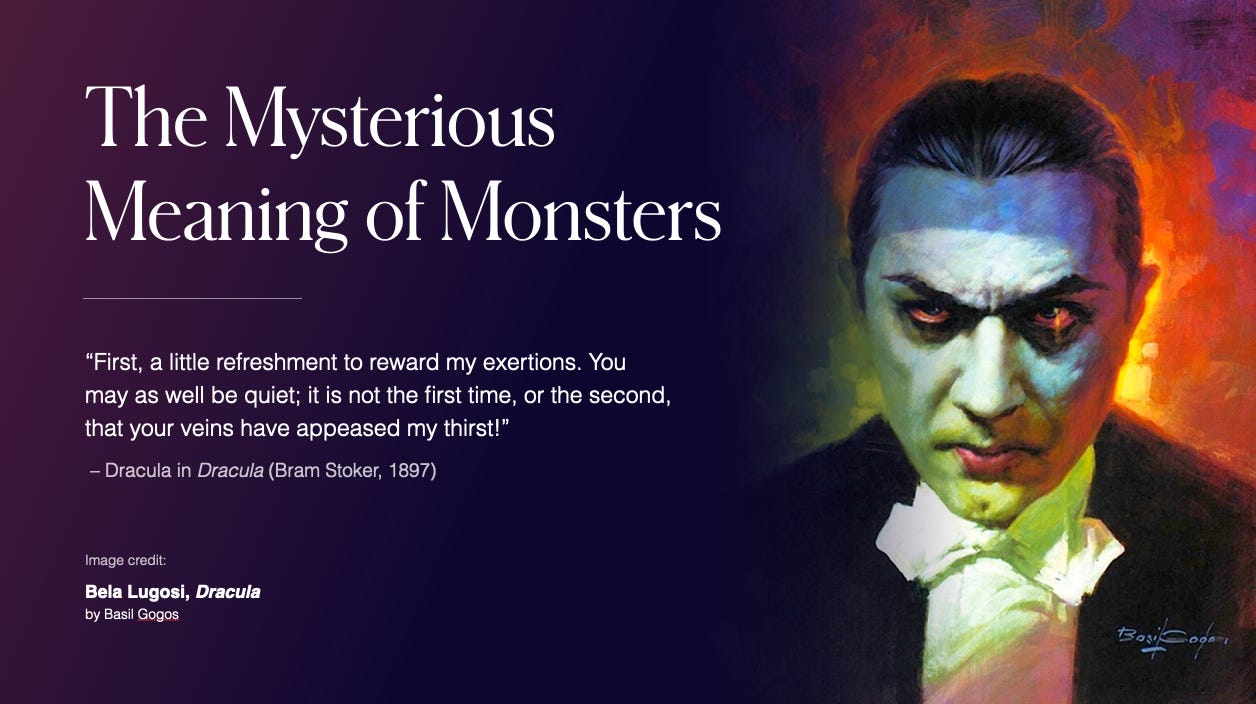

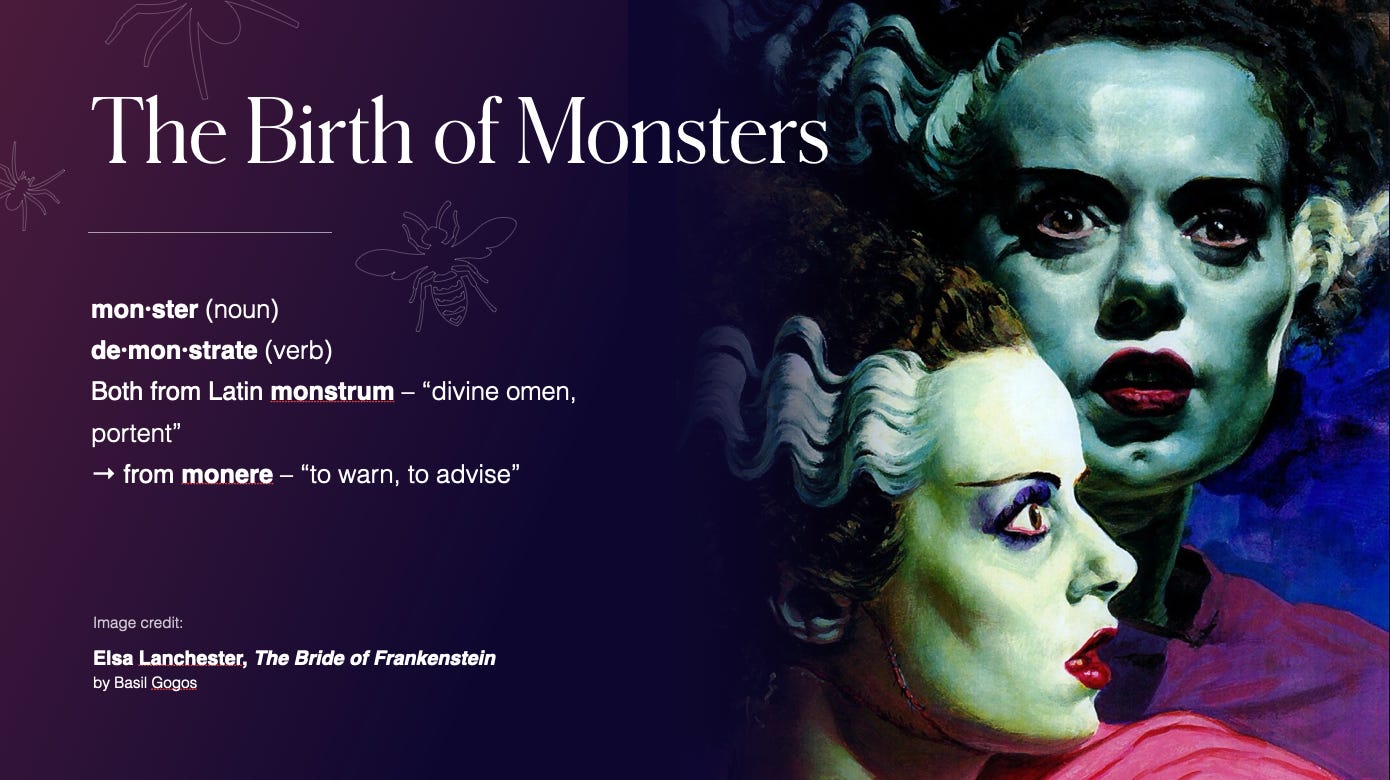
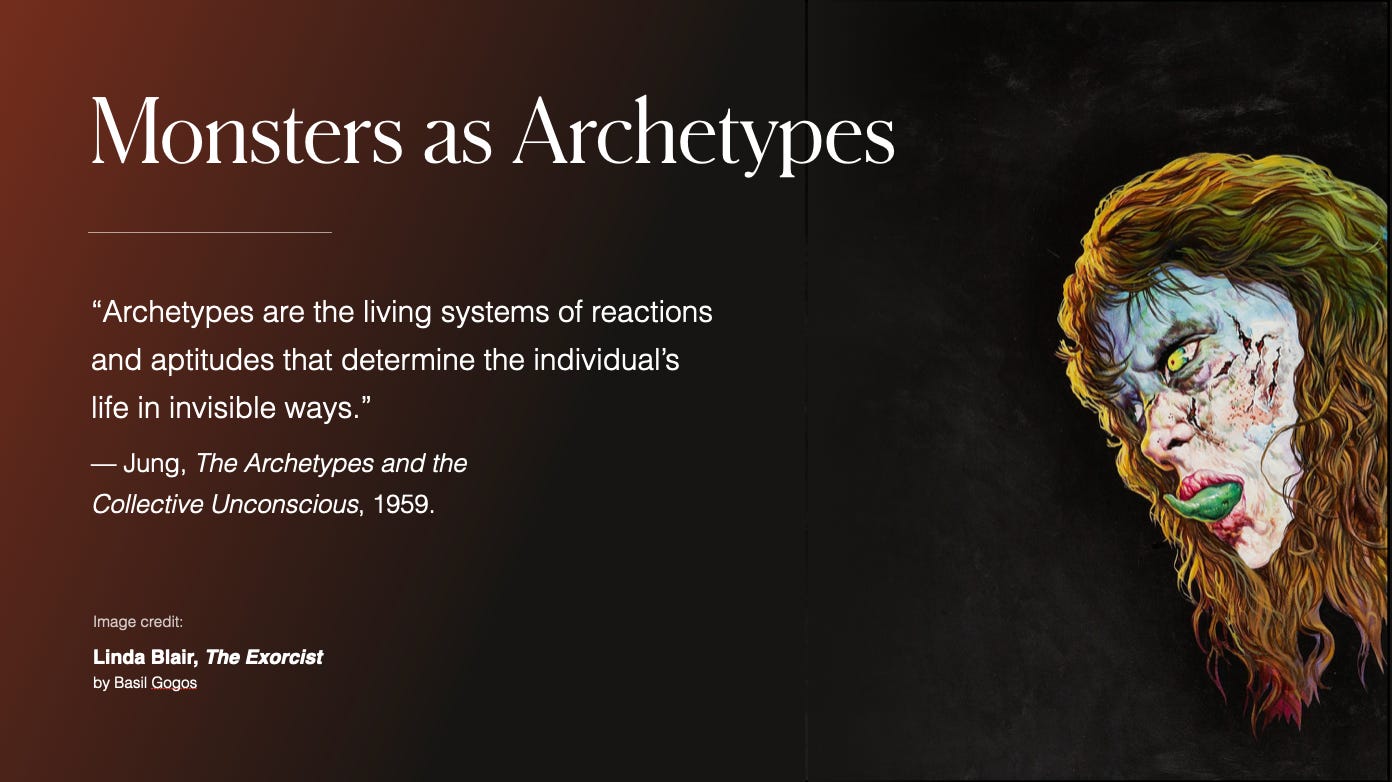

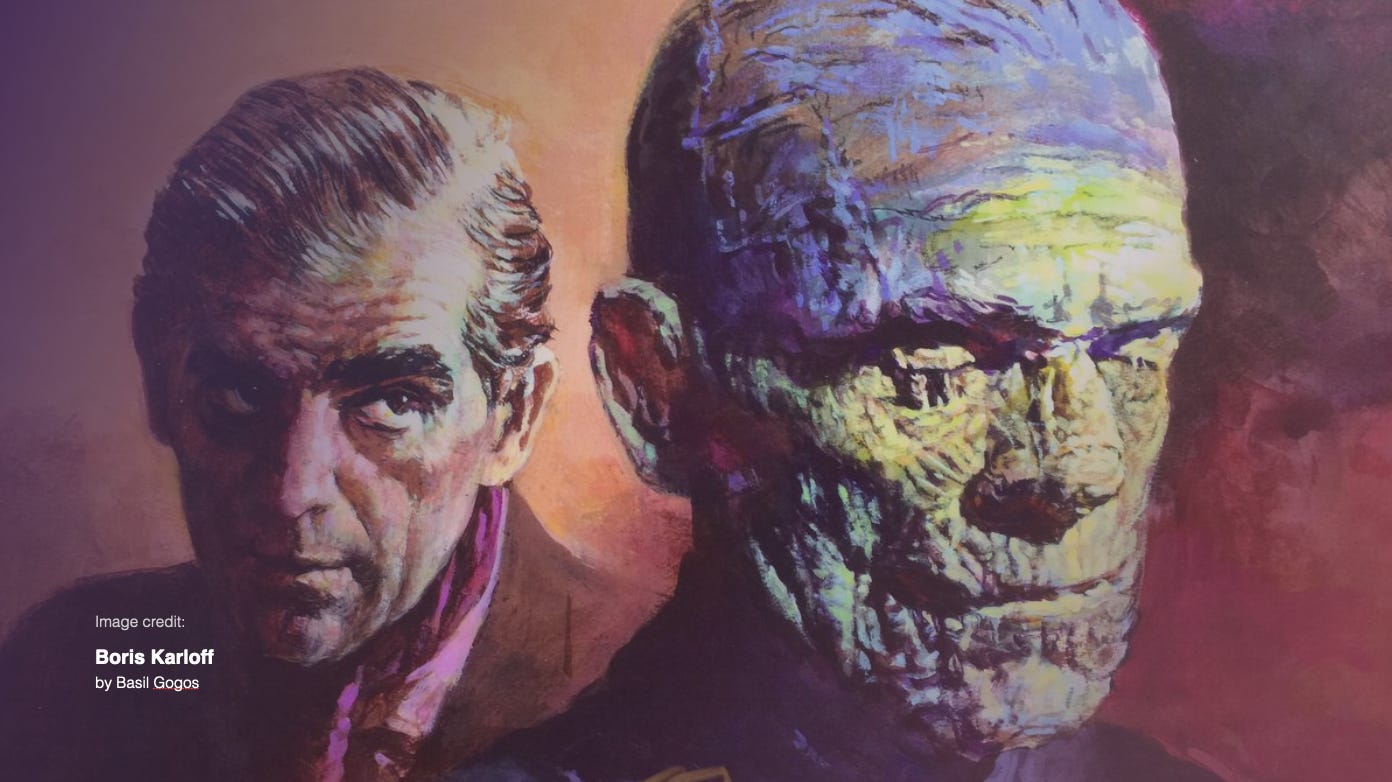
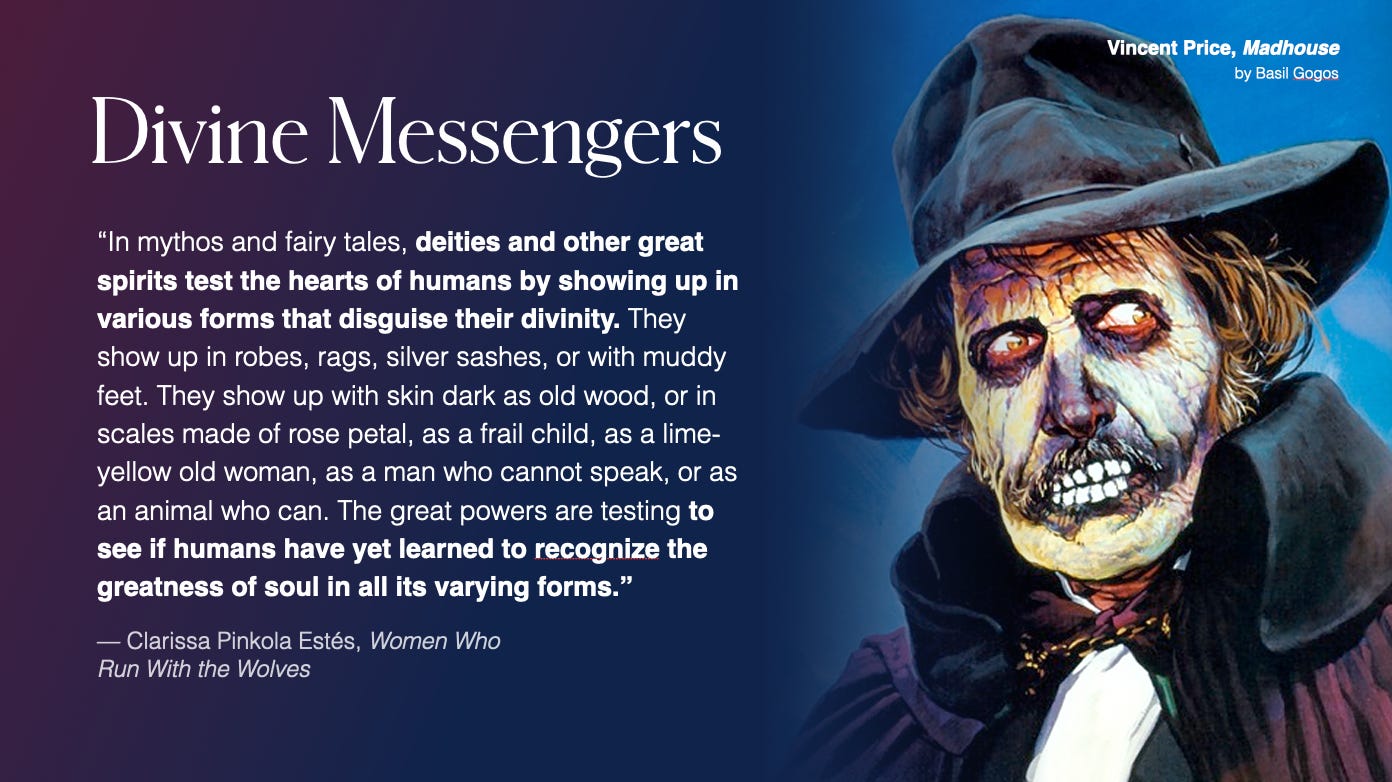
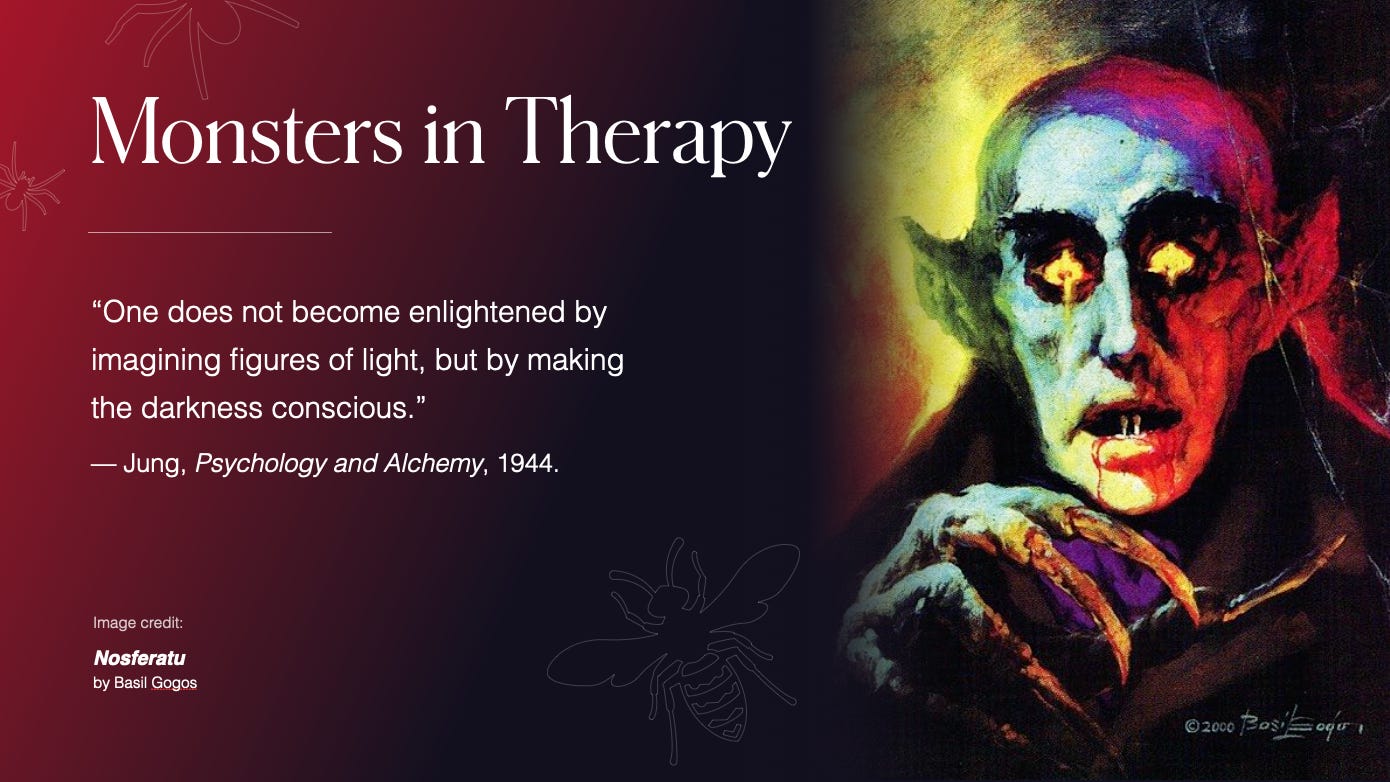
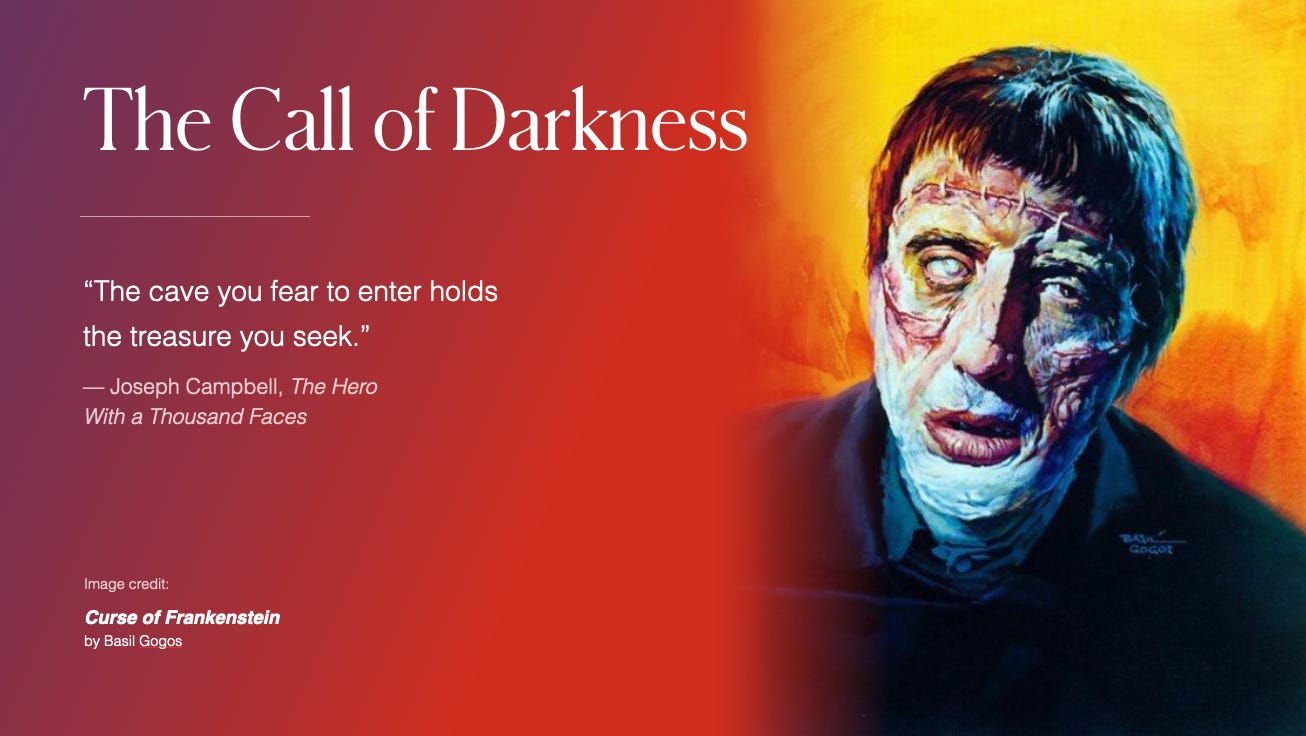

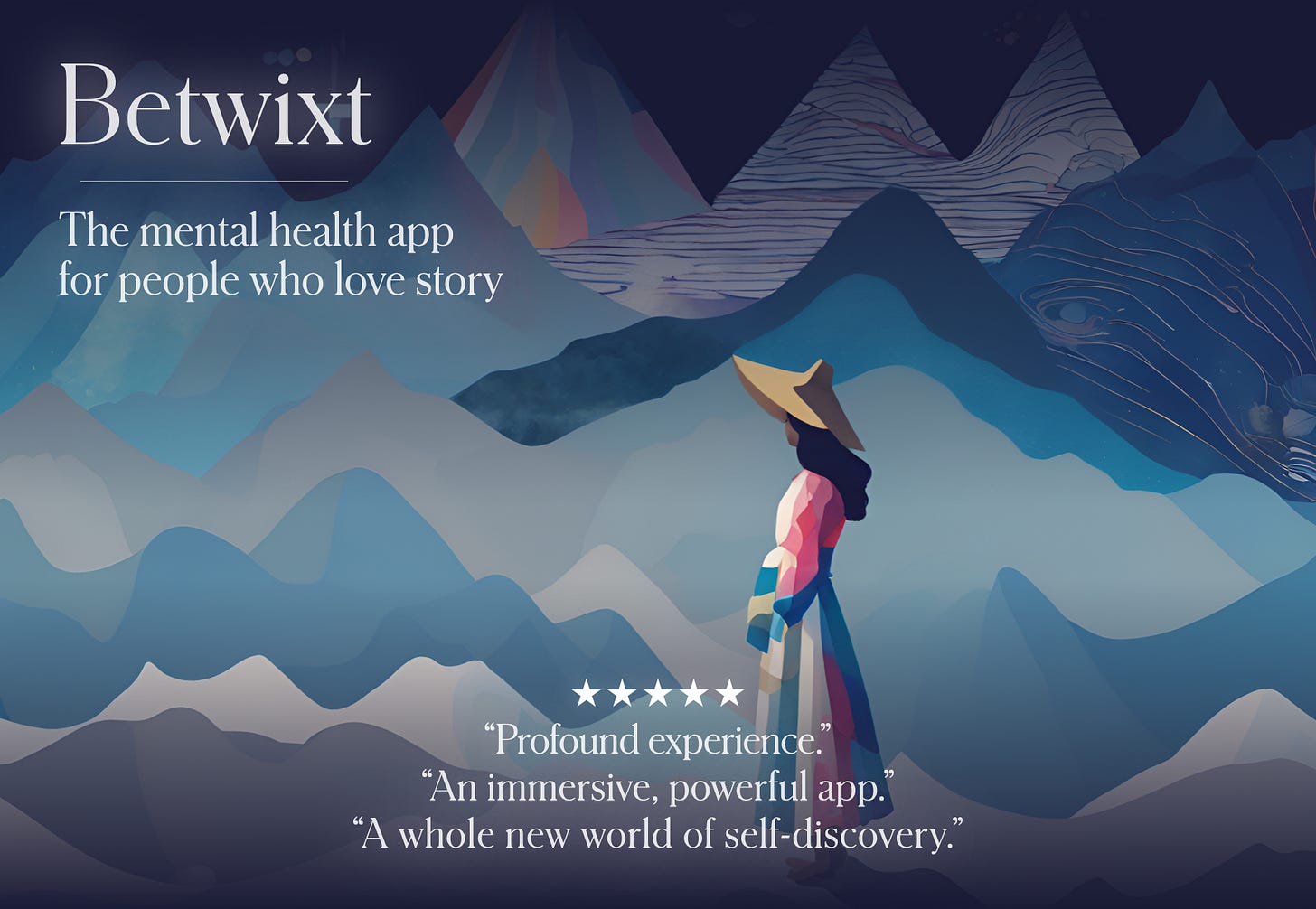
I’ve been looking into dopplegangers as a type of monster, reflecting shadow side of self. This article was so timely for me, thank you!
The boogeyman has definitely been the monster that haunts me the most - am curious to reflect on what it may be trying to say, and to invite it in rather than banish it so I may listen